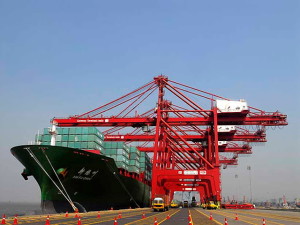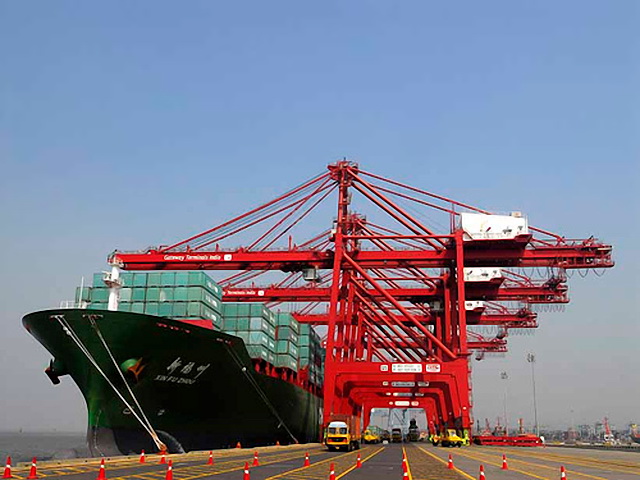 After a promising six-month outlook, the outlook for the freight forwarding market has since tempered, according to the latest results of the Stifel Logistics Confidence Index.
After a promising six-month outlook, the outlook for the freight forwarding market has since tempered, according to the latest results of the Stifel Logistics Confidence Index.
Shippers and forwarders showed minimal increase in confidence for airfreight demand in the next six months with only a 0.1 point increase, and were even less enthusiastic about sea freight, posting an almost 1 point decline. This pulled down the Stifel Logistics Confidence Index 0.5 points to 56.8.
Even though overall confidence slipped from last month, it is still 1.6 points higher than the same period last year and 5.5 points higher than June 2013, the report said.
While conditions have improved, improvements have hit bumps throughout this prolonged economic recovery period and “it appears we are undergoing through another one,” according to the report.
It agreed with observations made by the International Air Transport Association that “world trade is no longer expanding at a faster rate than domestic production,” and the International Monetary Fund pointing to a “new mediocre” in global trade that can be resolved only with more trade liberalization, and more focus on investment, services, and coherent regulations by advanced economies.
In the airfreight market, little month to month change was seen, as the index showed a gain of only 0.1 points to 55.6. Compared to June 2014, however, it is up 5.7 points and up 13.6 points from June 2013.
“The global airfreight market has made strong improvements since 2013 thanks to lower oil prices and improving economic conditions in the U.S. and Europe,” said the paper.
All trade lanes noted some growth with Europe to Asia and U.S. to Europe each gaining the most, 0.8 points to 59 and 49.9, respectively. However, the Europe-U.S. lane fell 1.5 points to 61.2 as the euro strengthened for the period.
The outlook improved only 0.2 points to 63.6. But compared to last year, freight forwarders are more positive, up 5.9 points and from 2013, up 6.9 points.
The most optimism appears to be for the U.S. lanes with the U.S. to Europe lane up 2.7 points to 59.4 and the Europe to U.S. lane up 0.7 points to 64.5.
Economic uncertainty in Asia continues to be a concern for these lanes as the outlook declined—Europe-Asia down 1.5 points to 63.2, and Asia-Europe down 0.7 points to 66.4.
This trend towards higher optimism for the U.S. lanes seems to be a long-term one, particularly the Europe-U.S. lane, up 10 points from 2014 and up 6.5 points from 2013, whereas the Europe-Asia lane is up only 4.3 points from 2013 and up 4 points from 2014.
In sea freight, port handling of larger ships, capacity, and rate issues continue to be concerns for shippers and forwarders alike. As the issues relating to the U.S. West Coast port situation begin to settle and other ports such as those in the Philippines look for ways to avoid a repeat of congestion problems, the present situation gained 0.9 points to 46.8.
However, the present situation remains a concern because this is the second consecutive month it is below the 50-level and is now 5.4 points lower than June 2014 and 1.4 points lower than June 2013.
Three of the four lanes remain below the 50-level with the U.S.-Europe lane slipping even further for the third consecutive month to 38.7. Confidence on this lane is 14.2 points lower than that of 2013 and 10.7 points lower from 2013.
The six-month outlook for sea freight also seems to be worsening, down 1.6 points to 61.3, noted the index. Three of the lanes are down but there seems to be hope the U.S.-Europe lane will improve from its dismal present situation, up 0.9 points to 55.6.
Compared to 2014 and 2013, optimism for the outlook of sea freight still remains high.
Photo: Jaxer





